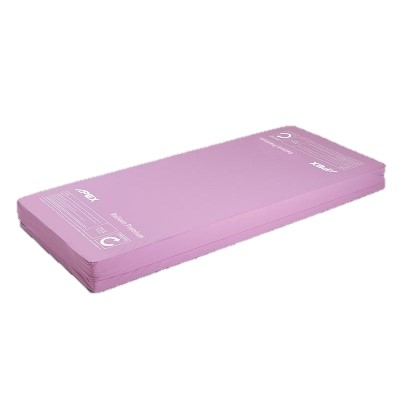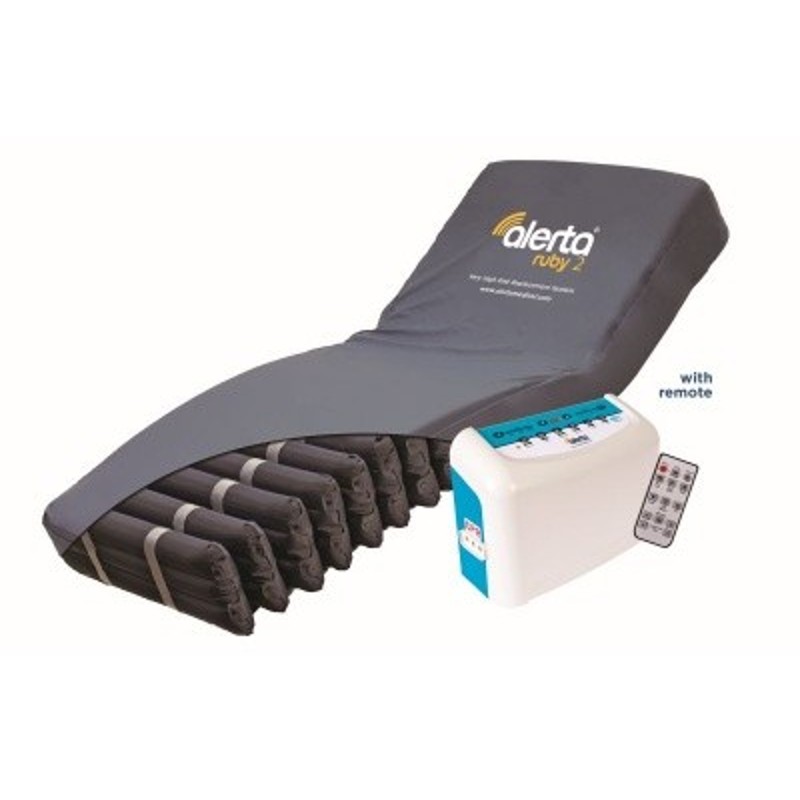Understanding Pressure Sore Risk Scales
When deciding which pressure relief system is appropriate for your patient or loved one, sifting through the multitude of available options can be difficult. Luckily, we're here to show you the two most reliable scales, which help guide medical professionals and patients through the process.
The first of these scales, the Waterlow Assessment, was invented in 1985 by Judy Waterlow, and the second, the Braden Scale, was developed in 1987 by Barbara Braden and Nancy Bergstrom. Both of these systems were developed to provide health professionals, especially nurses, with a method of assessing a patient's risk of developing a pressure ulcer.
Please note: Both the Waterlow and Braden scales are guides to determine risk status of developing pressure ulcers. Results must be mediated by professional judgement depending on the situation.
The Waterlow Assessment
Pressure Relief Cushions
The Braden Scale
The Waterlow Assessment
The first of these two systems, the Waterlow Assessment, is the most popular pressure sore risk assessment and prevention tool in the UK. Easily understood by nurses dealing directly with patients, this scale uses a series of evaluations of different patient attributes, each receiving a score based on severity. These numbers are then summed up to create one larger comprehensive number representing the patient's overall risk of pressure sore development.
Waterlow Assessment Scoring Guide
This scale is made up of a number of independent evaluations of what have been identified as the primary factors in determining a patient's risk level. These factors are:
- Build/Weight for Height: This risk factor takes into account the patient's BMI (Body Mass Index), a widely recognised measure of a person's height to weight ratio.
- 0: Given to a BMI between 20 - 24
- 1: Given to a BMI between 25 - 29.9
- 2: Corresponds to a BMI over 30
- 3: Given to a BMI below 20
- Skin Type/Visual Risk Areas: This section deals with a nurse's visual evaluation of their patient's skin type or any skin deformities that may indicate an increased pressure sore risk.
- 0: Represents a healthy evaluation
- 1: Given to skin that is "tissue paper dry", oedematous, or clammy
- 2: Given if the skin meets the criteria to be considered "discoloured grade 1"
- 3: Given to skin that is broken or shows spots at a grade of 2 - 4
- Sex/Age: This section combines two separate scores: sex and age.
- 1: Male patients receive a score of 1
- 2: Female patients receive a score of 2
- 1: Received by ages between 14 - 49
- 2: Given to those between the ages of 50 - 64
- 3: For those between 65 - 74
- 4: For patients between 75 - 80
- 5: For any patient above the age of 81
- Continence: This section deals with continence, or a patient's ability to control their bowels.
- 0: Patients with full bowel control or those who are catheterised
- 1: Given to those who suffer from urinal incontinence
- 2: For patients with faecal incontinence
- 3: For patients suffering from both urinary and faecal incontinence
- Mobility: This section evaluates a patient's level of mobility, as well as their tendency or ability to move around while in bed.
- 0: Given to patients who are fully mobile with no restrictions
- 1: For patients who are not fully mobile but are restless or fidgety in bed
- 2: For patients who are apathetic with little motivation to move
- 3: For patients with restricted mobility who are not fully bed bound
- 4: Given to patients who are fully bed bound or in traction
- 5: For patients who are fully chair bound, mainly those bound to a wheelchair
- Malnutrition Score: This section takes into account whether the patient has been losing weight recently, and if so, how severely and for what reason.
- 0: Given to patients who have not lost weight and have been eating well
- 1: For patients who have recently lost 0.5 - 5kg, or those that have not lost weight but are eating poorly
- 2: For patients who have recently lost 5 - 10kg, or if the carer is unsure of exact weight loss
- 3: For patients who have recently lost 10 - 15kg
- 4: For patients who have recently lost over 15kg
- Special Risks: This final section assigns values based on specific conditions. For temporary conditions, scores can be discounted after 48 hours if the patient is recovering normally.
- 1: For smokers
- 2: For those with anaemia
- 4 - 6: For patients with diabetes, MS, CVA, motor/sensory deficit or paraplegia
- 5: Patients with single organ failure, peripheral vascular disease, orthopaedic/spinal surgery or trauma, or those who have been in operation for over 2 hours
- 8: Patients with terminal cachexia, multiple organ failure, or those that have been on an operating table for more than 6 hours
What Your Score Means
Once all of these scores have been tallied up, medical professionals are left with a reasonably reliable assessment of the patient's pressure sore risk, and can choose pressure relieving products accordingly. A score of 10+ indicates a patient is at risk, a score of 15+ represents a high risk level and a score of over 20+ means that the patient is at very high risk of pressure sore development. After considering this, the two primary pressure relieving tools to be chosen are mattresses and cushions.
Pressure Relief Mattresses
These are pressure relieving mattresses, either overlay or replacement, that distribute pressure evenly along the user's body. Low-Medium Mattresses are usually made of foam, and are often known as 'static mattresses'. On the other hand, 'Medium-Very High' mattresses are usually filled with air - also known as 'dynamic' mattresses.
10+: Low to Medium Risk
Patients with this score qualify for specialist foam mattresses or overlay systems like the Apex Relievo Premium Pressure Reduction Mattress.
✔ Castellated foam mattress supports the body and reduces ulceration
✔ Side bolsters provide added stability for transfers
✔ Can be used with four-section profiling and divan-style beds
Ideal For...
✔ Simple and intuitive pressure care
✔ Protection from bacterial and house dust mites, MRSA, fungal growth
✔ Reduction of shear forces and friction, which exacerbate pressure sore risk
15+: High Risk
Those with this score require an intense solution to pressure ulcers, such as the Alerta Emerald Overlay Alternating Air Mattress System.
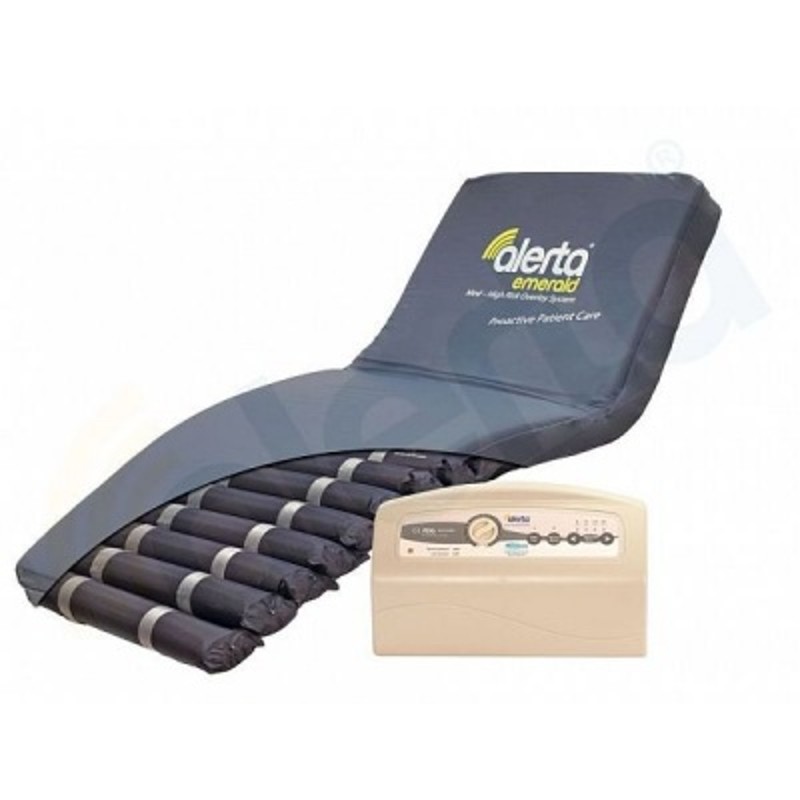
Why We Love It...
✔ Castellated foam is ideal for use in normal and profiling beds
✔ Vapour permeable PU cover is easy to clean and convenient
✔ Constant Pressure Regulation with SensaCare Technology
Ideal For...
✔ Medium-High risk patients
✔ Use in care homes and private residences
✔ Low-maintenance pressure mattress
20+: Very High Risk
Patients with a score over 20 qualify for a full mattress replacement system. This can include alternating air mattresses, low air loss and fluidised bead mattresses. A great choice for patients in this risk category is the Alerta Ruby 2 Alternating Air Mattress Replacement System.
✔ SensaCare Truflo Technology provides constant auto pressure
✔ Promotes natural sleep patterns with Ultra-Silent pump operation
✔ Triple cell-on-cell air cells and static base provides comfort and treatment
Ideal For...
✔ Care homes and private residences, with intuitive control system
✔ Easy clean up, with removable cells and machine washable cover
✔ Emergency CPR mode enhances patient wellbeing and safety
Pressure Relief Cushions
These cushions are primarily aimed at wheelchair-bound patients, of which none should sit without some type of cushion. For more options, check out our blog on Choosing the Right Pressure Relief Cushions.
10+: Low Risk
This score identifies the minimum requirement for a gel or foam cushion of at least 100mm in thickness, such as the Harley Proform Pressure Relief Cushion - Standard.
.jpg)
Why We Love It...
✔ High grade nodular foam allows air to circulate freely
✔ Lightweight, easy to transport for on the go relief
✔ Fits with any chair or wheelchair for convenience
Ideal For...
✔ Light pressure relief
✔ Personal and professional use
✔ Help with bettering posture and general body support
10+: Medium Risk
This score identifies the minimum requirement for a gel or foam cushion of at least 100mm in thickness, such as the Alerta Sensaflex 200 Foam Pressure Relief Cushion.
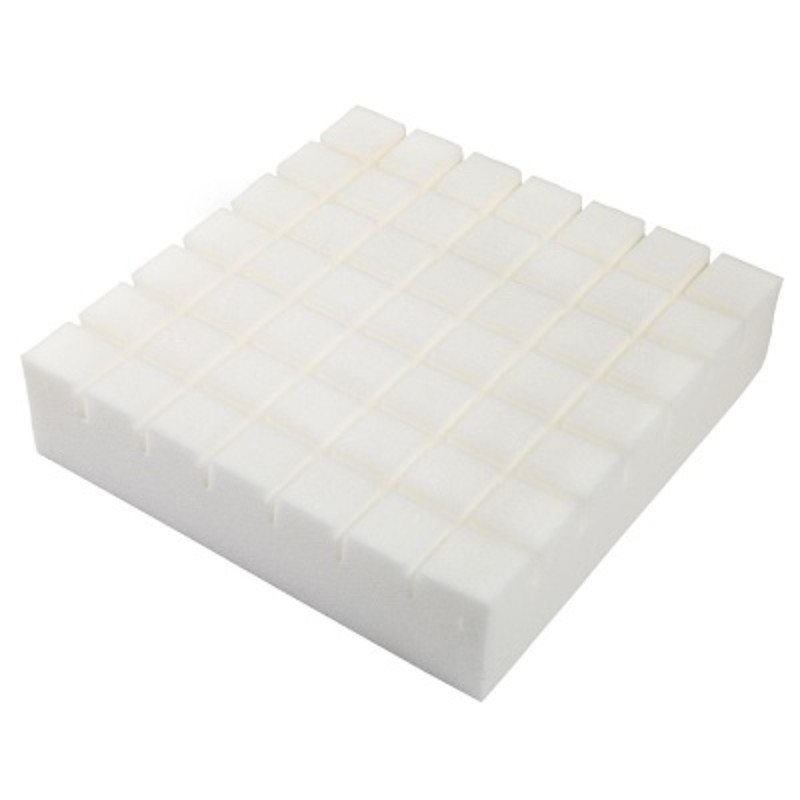
Why We Love It...
✔ Great value foam pressure cushion made of high quality foam
✔ Castellated foam reduces friction and shearing, preventing ulcers
✔ Antimicrobial two-way stretch cover protects against infection
Ideal For...
✔ Every day relief, compatible with most chairs plus wheelchairs
✔ Lightweight, can be carried and transported easily
✔ Machine washable, perfect for patients and carers
15+: High Risk
Patients with this score will require a specialist gel or foam cushion like the Stratus Alternating Air Pressure Relief Cushion System
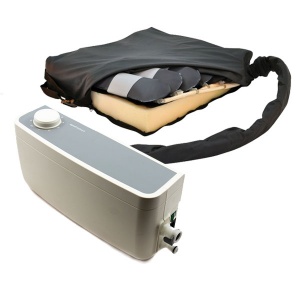
Why We Love It...
✔ Repositions the body using constantly alternating air cells
✔ Prevents future ulceration and treats existing pressure ulcers
✔ Scalloping at the front adds additional comfort to the leg area
Ideal For...
✔ General use, for patients of various sizes
✔ Simple and effective prevention of pressure ulcers when seated
✔ People needing great hygiene, with antimicrobial, vapour-permeable cover
20+: Very High Risk
Anyone over a score of 20 requires an adjustable specialist cushion that can be customised to the individual user, such as the Viola II Alternating Pressure Relief Cushion System.
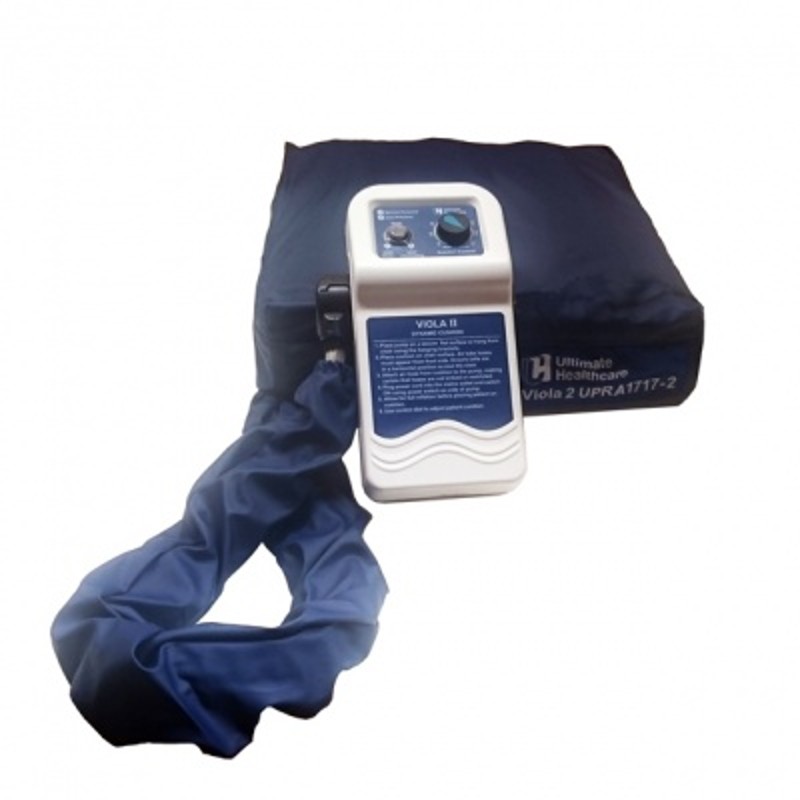
Why We Love It...
✔ Simple controls allow easy adjustment to meet patient standards
✔ Audio and visual power failure alarms maximise patient health and safety
✔ Integral foam base is comfortable yet supportive for all-day support
Ideal For...
✔ General everyday use in chairs and wheelchairs
✔ People suffering from pain in the forefoot and heel
✔ Various patient sizes, from 160kg - 220kg (bariatric friendly)
After carers use this scale to select and appropriate pressure relief mattress or cushion, the Waterlow manual lays out a few important guidelines for proper use. These two golden rules are:
- Avoid plastic draw sheets, incontinence pads and tightly tucked in sheets and covers, as these can reduce the efficacy of your cushion or mattress. This is especially true in the use of specialist beds and mattress overlay systems.
- Use a duvet over the top of your patient. In addition to this duvet, it is crucial that a vapour permeable membrane is included to allow for air flow and prevent overheating.
The Braden Scale
The second pressure relief risk scale to be examined is the Braden Scale, which, like the Waterlow Assessment, is designed to help health professionals, especially nurses, asses a patient's risk of pressure ulcer development. This score also assigns a value to a patients risk level by examining six distinct criteria, and assigned a score to each one. Once these scores are determined, the values are summed up to find a single comprehensive risk score, with the lower scores indicating an increased pressure sore risk.
Braden Scale Scoring Guide
- Sensory Perception: This section determines a patient's ability to respond meaningfully to pressure-related discomfort. Pain perception and consciousness are central to this score.
- 1: Completely limited perception. A patient receives this score if they are completely unresponsive to pain, or have limited ability to feel pain over most of their body.
- 2: Very limited. Given when a patient responds to only painful stimuli, or cannot feel pain over half their body.
- 3: Slightly limited. Responds to verbal commands but cannot always communicate discomfort, or cannot feel pain in 1 or 2 extremities.
- 4: No impairment. Responds to verbal commands with no sensory deficit.
- Moisture: This section evaluates the degree to which skin is exposed to moisture.
- 1: Constantly moist. Skin is kept moist almost constantly by sweat or other fluids.
- 2: Very moist. Skin is often, but not always moist. Linen must be changed at least once a shift.
- 3: Occasionally moist: Skin is sometimes moist, requiring an extra linen change once a day.
- 4: Rarely moist: Skin is usually dry and linen only needs to be changed at routine times.
- Activity: This section refers to a patient's level of activity in regards to walking ability or moving in bed.
- 1: Bedfast. For patients who are confined to bed.
- 2: Chairfast. Patients with severely limited ability to walk. Cannot bear their own weight unassisted.
- 3: Walks occasionally: Able to walk during the day, but for very short distances.
- 4: Walks frequently: Walks outside the room at least twice a day and inside room at least once every two hours.
- Mobility: This value is assigned based on the patient's ability to change and control their body position independently. This assesses both competency and willingness of the patient to move.
- 1: Completely immobile. Given to patients that do not make even small changes in position without assistance.
- 2: Very limited: Makes occasional slight changes in body position but unable to make frequent changes.
- 3: Slightly limited: Makes frequent though minor changes in body or extremity position without assistance.
- 4: No limitation: Makes major and frequent changes in body position without assistance.
- Nutrition: This assesses the patient's normal patterns of daily nutrition.
- 1: Very poor. Score given to patients who never eat a complete meal, and rarely eat more than half the food offered. They eat two servings or less of protein a day, and takes fluids rarely. These patients do not take a liquid dietary supplement or are NPO and/or maintained on clear liquids or IVs for more than five days.
- 2: Probably inadequate. Rarely eats a complete meal and usually eats about half the food offered. Protein intake is only 3 servings per day, and they occasionally take a dietary supplement. They could also receive less than an optimum amount of liquid or tube feeding.
- 3: Adequate. They eat over half of most meals and a total of four protein servings a day. Occasionally they refuse a meal, but will take a dietary supplement when offered. These patients could also be on tube feeding which probably meets most nutritional needs.
- 4: Excellent: They eat most of every meal, and eat four or more servings of protein a day. Does not require supplements and occasionally eats between meals.
- Friction and Shear: This evaluates the amount of assistance the patient needs to move and the degree of sliding on beds and chairs that they experience.
- 1: Problem. This score is given to patients requiring moderate to maximum assistance in moving. Lifting without sliding against sheets is impossible, and the patient frequently slides down in their bed or chair, requiring frequent positioning.
- 2: Potential problem: These patients move feebly or require minimum assistance. During a move, skin slides to some extent against sheets, chairs or restraints. They maintain relatively good position in their chair or bed most of the time.
- 3: No apparent problem: For patients who move in their bed or chair independently and have the strength to lift up completely during the move. They also maintain a good position in their bed or chair.
What Your Score Means
After scoring the patient and summing up the results, care teams are left with a score representative of the patient's relative risk of pressure sore development. This score combines for a possible total of 23 points, with a higher score indicating a lower risk of pressure sores. A score or 23 indicates no risk, while a score of 6 represents the highest possible risk. The risk levels break down as follows:
No Risk: Total score of 19 to 23
These patients are not deemed at risk of pressure sore development, but may still benefit from a mattress like the Alerta Bubble 2 Overlay Alternating Air Mattress System.
123.jpg)
Why We Love It...
✔ Extension flaps and removeable CPR tubes make this safe for patients
✔ Waterproof, antimicrobial material maximises patient hygiene
✔ Lightweight and compact with its own transport mode for ease of use
Ideal For...
✔ Patients needing light pressure relief with transportability
✔ Great value pressure relief for patients requiring less support
✔ Carers and patients needing a low maintenance pressure mattress
Mild Risk: Total Score of 15 to 18 and Moderate Risk: Total Score of 14 to 15
A cost effective mattress for this risk level is the Carefree Modular Cut Pressure Relief Overlay Mattress.
.jpg)
Why We Love It...
✔ Modular cut CMHR foam reduces pressure risk
✔ Waterproof, vapour-permeable cover protects overlay
✔ Redistributes bodyweight, avoiding high pressure zones
Ideal For...
✔ General everyday use
✔ People suffering from pain in the forefoot and heel
✔ Preventing foot fatigue after being on the feet for long hours
High Risk: Total score of 10 to 12
An excellent choice for these patients is the Invacare Propad Visco Pressure Relief Mattress Overlay.
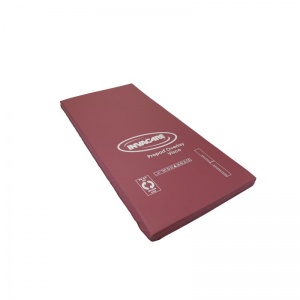
Why We Love It...
✔ Our most popular static pressure mattress
✔ Waterproof, multi-stretch cover for added hygiene
✔ Dual-layer design with visco-elastic memory foam and robust foam base
Ideal For...
✔ Technophobes - minimalist design is easy to use and intuitive
✔ Patients and carers needing a low maintenance pressure mattress
✔ High risk patients needing support on all areas of the body
Very High Risk: Total Score of 9 or Less
These patients require an extremely reliable pressure relief system like the Repose Mattress Pressure Relief Overlay.
.jpg)
Why We Love It...
✔ Lightweight and intuitive pressure relief overlay
✔ Easy to clean, can be wiped down with soap and water for hygiene
✔ Smart valve ensures the overlay inflates to the optimal pressure
Ideal For...
✔ Easy-to-use, easy to transport pressure relief
✔ People at very high risk of developing pressure ulcers
✔ Quick-inflation, for individuals needing fast relief from pressure ulcers
Bottom Line
While both of these scales are excellent tools to help medical professionals decide on which pressure relieving products to use, neither can be blindly followed, and carer discretion should always be considered. These systems represent some of the best methods of putting a patient's pressure sore risk in context, and can make deciding between seemingly similar mattresses and cushions simpler and clearer both for nurses and family members. We hope that after reading this, you are more informed about which pressure relieving product is right for you, and can navigate the complicated world of pressure relief with appropriate discretion.
Shop our entire line of Pressure Relief Cushions and Pressure Relief Mattresses at Health and Care today.
Have anything to add? Tell us in the comments below!

